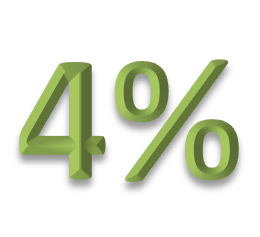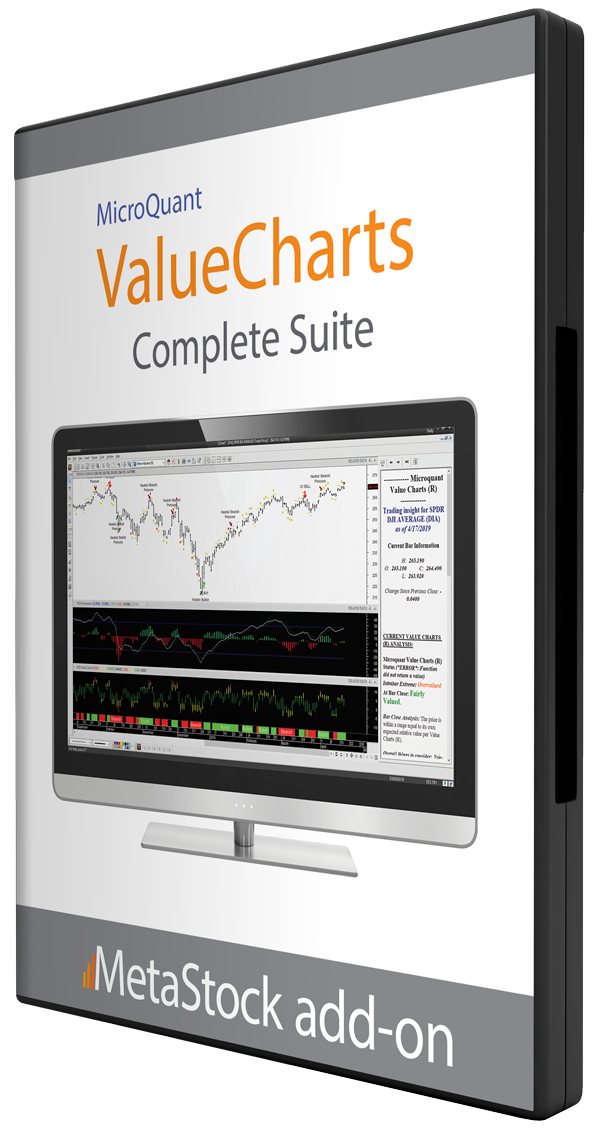Not, that’s not a typo. We’re saying that when you trade stock options, it gives you lots of options to generate significant income into your account day after day, week after week.
In fact, there are dozens of ways to profit from Stock Options.
Some are simple, and some are complex. Some use one type of option, some use multiple, even up to 4 or more at once. Some are risky, some are safe. Some are short term, some are long term, with some trades lasting years.
So which one to use? That depends on you. More specifically, it depends on your acceptable level of risk. If you’re someone who’s willing to put more of your available money at risk, then you have the opportunity to make more, or make money faster. However, that higher risk means that your money is at greater risk, and though higher risk can mean higher reward, not everyone is comfortable with putting their money at risk. Especially if you’re nearing retirement age.
So why use options if you are risk averse? Options can be extremely profitable even when we use minimize our risk, if we know how. With the right knowledge, we can use lower-risk option trades that can generate consistent income. And this could mean a big difference not only for investors just starting out, but also for traders who are nearing retirement age and are trying to generate enough money to retire, especially if you got a late start in investing.
Even if You’ve Gotten a Late Start (as many do!)
Here’s a great example. One of our most popular strategies at Basecamp Trading is a strategy that can be completed within one day in the market. This strategy can generate 20 cents per contract. That doesn’t sound like much, but let me explain what makes that 20 cents exciting.
When we trade options, we’re usually trading in 100-share contracts, so 1 contract that makes 20 cents per share collects $20 per contract.  If you trade 10 contracts, you make $200. Now we’re talking some decent returns.
If you trade 10 contracts, you make $200. Now we’re talking some decent returns.
But to really understand the return from the trade, let’s compare the reward to the risk. How can 20 cents sound great? In this option trade, we typically risk $4.80 to make 20 cents. That means that we’re making 4% on the risk money (0.20/4.80 = 0.04).
If 4 percent doesn’t sound exciting, then take a look at what your bank account is paying you. A typical bank account is paying about 2% if you’re lucky – maybe 2 ¼ % if you shop around, but you may be surprised that many bank accounts are still paying far less than 1%.
And if inflation is at 2% and you’re not making at least 2%, then you’re not keeping up! You’re actually losing money by keeping your money in a bank account that’s not keeping up with the rate of inflation.
So if making 4% sounds better than making 2%, and especially less than 1%, then you’re starting to get the picture. But wait a second. Did you hear how long it takes to make the 4% in our options trade? If you were paying attention, you may have noticed that we said the typical return is achieved in one day. How long does it take to make the 1 to 2% in your bank account? A full YEAR! So the 4% you get from the safer option trade is actually many MANY times larger than you might have imagined.
Bigger Gains Than You Imagined!
How much bigger? Let’s say that we can make one of these trades 3 times a week. If we can achieve that, then that will achieve 12% a week (3 x 4%). If you can do that 4 x a month, we’re now talking 16%. If you can do it 50 weeks a year (you gotta take a couple weeks of vacation, or what’s the point!?), it’s a whopping 200% a year (50 weeks x 4%). And that’s not even taking compounding into account.
Even if you only achieved half of that, it means that the seemingly small 4% return is now doubling your account every year. If you had $10,000 in your investment account, you’re up $10,000 to $20,000 a year! If you put $10,000 in a bank account earning 2%, you’d be up $200. Now, what would you rather have, $200 or $10,000 in gains?
Silly question. Of course you want the larger gains. And that’s what making just 20 cents per share can do for you and your account.
That’s why we have to compare apples to apples when we’re evaluating potential investment choices.
When we talk about potential success of a system, we want to not just look at the return, but also the likelihood of each trade succeeding. If we have a trade that can make a 50% return that only works 2% of the time, the effective return is 50% x 2%, or 1%. If we have a trade that  can generate 5% and wins 90% of the time, the effective return is 5% x 90%, or 4.5%. Which would you rather have? An average 1% return or a 4.5% return?
can generate 5% and wins 90% of the time, the effective return is 5% x 90%, or 4.5%. Which would you rather have? An average 1% return or a 4.5% return?
This is what can be deceiving at times, because people often only look at the potential returns of the biggest wins. They forget that over time, it’s consistency that’s key.
And what if we can find a larger return with a reasonable chance of success? That can be extremely account-building as well. Options give us that potential, which is why so many people are excited about them.
Why Are Experienced Traders So Excited About Options?
Here’s why. Let’s say we buy AAPL at $200, and it goes up $5 in a week. That’s a 2% rate of return. Nice return! If we bought the call option that has a delta of 70 for $6.30, is it a better rate of return? Let’s see. If the delta is 70, that means that for every dollar the stock rises, the option will increase by 70 cents. The delta of the purchased call will increase as the stock price rises, but for simplicity, let’s just assume the delta stays at 70. If the stock rises by $5, 70% of that rise is $3.50. That means we’d make $3.50 on our option vs buying the stock outright. That’s less per share than we’d make by buying the stock itself. But remember, we only had to come up with $6.30 per share to buy the option, vs $200 per share to buy the stock. So the rate of return is much higher compared to what we had at risk. What’s the return? $3.50 / $6.30 is a whopping 55% return. That’s a 27 times higher rate of return than the 2% buying the stock would have netted.
Now you’re starting to see the power of options. We can actually risk less money and get a better rate of return. This also means that we have more capital to use to make other trades, too!
However…. (there’s always a however, isn’t there?).
Remember what we discussed earlier? We need to not only look at the potential reward, but also the likelihood of it succeeding. In an options trade, we need the move to happen in the stock before our option expires. So the likelihood of our option trade is potentially lower since it must be achieved in a limited amount of time.
As you can see, there’s a balance to achieve here. What most knowledgeable income-generating traders want to find is a system that offers a reasonable return that has a high likelihood of succeeding.
Getting the Bigger Gains with Managed Risk
So how can we get the benefit of the high returns and low capital requirements of options while maximizing the likelihood of success?
That’s where having the right trading knowledge and effective systems can help. Here’s an example of how we can harness the amazing power of options.
If you trade options by buying calls or buying puts (known as directional trades), the return can be good, but the likelihood of success is lower than other types of options trades. That’s because when you buy a call, to make money, your underlying stock must rise in a limited amount of time. The potential to make a nice return is there, but you have to be right. And you have to be right by the time the option expires.
You see, once you buy something, it’s going to do one of three things: go up, go down, or stay the same. When buying an option, only one of those three outcomes will result in a gain. When buying a call, the underlying stock price must rise in order to make money. And not by just a little. You have to make enough money just to cover the cost of the option, after which you start to make a profit.
 So when buying a call, the underlying stock must rise to be profitable. When buying a put, the underlying stock price must drop to make money. If it stays the same or goes the other way, we lose money. Is there a way to improve the likelihood of success in options trading?
So when buying a call, the underlying stock must rise to be profitable. When buying a put, the underlying stock price must drop to make money. If it stays the same or goes the other way, we lose money. Is there a way to improve the likelihood of success in options trading?
When we sell options, we can actually have better odds of making money. That’s because when we sell options, we can make money in 2 of the three outcomes. Let me explain.
When we buy a call, we need it to go up. If we sell the call, we can take advantage of the time decay that options offer, which decrease the value of the call even if the underlying stock’s price doesn’t move a cent. So we make money if price stays the same. We of course get to keep our premium if the stock price drops when we sell a call. So that means that we can make money on a sold call as long as the price doesn’t go up. It can even go up a little, and we can still make a little or break even, because when we sell, we collect money up front. The trick is to not have to give that money back.
So rather than buy calls, we can increase the odds of the call trade being profitable by selling them rather than buying them. So why not sell calls all day long? In fact, we technically don’t even have to own a stock to be able to sell a call (though brokers won’t let most people do this – I’ll explain why).
Most Traders Aren’t Allowed to Do This
Let’s think about how calls work. If you buy a call to be able to purchase AAPL for $200 for a month, you have the right to buy the stock for $200 even if the price of AAPL skyrockets to $300 in value. If it went to $300 per share, you could still buy it for $200 up until the call’s expiration date. That would mean that you’d be effectively making $100 on your $200 investment.
However, what happens if you sell the same call and that happens. Let’s say you’re expecting AAPL to drop on a rumor that the screen glass supplier company is having production issues. You sell the $200 call expiring in a month anticipating a drop since AAPL can’t sell phones without glass screens. If someone wanted to exercise your sold call, they could pay you $200 and you would have to deliver the stock to them. No problem, you think because it’s going to drop in value. If your idea played out, the glass company’s problems might delay phone sales and drive AAPL down to $150 in value. AAPL buyers would be crazy to pay you $200 a share if they can buy it at the market price at $150, so your sold call would expire worthless and you keep the premium you collected when you sold the call a month earlier.
But what happens if the glass shortage problem was averted, and suddenly the restrictions on APPL were removed, and money poured into the stock on pent up sales, raising it to $300. Remember, you sold the call at the $200 strike price. That means somebody who bought that call from you at the $200 strike price can buy the $300 per share AAPL at just $200 from you. You’re the one who has to deliver the stock to them, at $200. If you don’t have the shares of AAPL stock to sell them, then you have to buy AAPL at $300 and sell it to them at $200 for a big loss. As you can see, that wouldn’t be profitable. In fact, it’s a huge loss.
Now let’s say that after you sold your $200 call, AAPL discovered their new building construction site had billions of dollars in gold in the ground. What would happen to AAPL stock in this unexpected windfall? It could rise, and rise and rise, way more than anyone anticipated. And if you still have a sold call at the $200 strike price, no matter how much AAPL rises, to $1000 a share or beyond, you are obligated to deliver AAPL at $200. As you can see, the risk is effectively infinite.
 Sound implausible? How about selling a call in ZZA Pharmaceutical and just after you collect the premium, they discover a cure for melanoma. What’s ZZA likely to do? Skyrocket! And if you don’t own enough shares of ZZA Pharmaceutical at expiration, you’re going to have to buy it at the now astronomical price, and what if you don’t have enough money in your account to do so?
Sound implausible? How about selling a call in ZZA Pharmaceutical and just after you collect the premium, they discover a cure for melanoma. What’s ZZA likely to do? Skyrocket! And if you don’t own enough shares of ZZA Pharmaceutical at expiration, you’re going to have to buy it at the now astronomical price, and what if you don’t have enough money in your account to do so?
What we’re describing here is something that brokerages strongly discourage except for huge accounts. It’s called selling Naked Calls, and the risk is effectively infinite. That’s why a Naked Call seller must have relatively infinite funds to cover any naked calls they sell. So for most traders, selling naked options is off the table, because the broker knows if you can’t pay, they have to pay.
What a shame. Those Naked options were so promising and extremely profitable when they worked.
But wait, what if you could sell naked options, but limit the risk? Perhaps we could profit from the selling of the uncovered option, by giving up a portion of our gains.
Most Traders ARE Allowed to Do This… All Day Long!
Believe it or not, this is one of the most common uses of options by people that have learned how to trade them. You’ve probably heard of this strategy, but perhaps didn’t realize that what you’re doing is making money by selling naked options.
What are they called? Spreads!
That’s right. When you sell a Bear Call Spread, you’re actually selling a naked call, but at the same time, buying a call at the next strike price as insurance. The risk gets reduced to the difference between the sold and purchased strike prices, which is often just $5. So if we sell the call and buy the next strike price’s call, if we are required to deliver the stock, we can exercise our purchased call to buy the stock at just $5 more than we paid for it, greatly reducing our risk per share. Now, instead of risk being infinite, it’s less than $5 per share. And brokers are more than happy with that kind of managed risk that they allow most traders to do these types of trades.
That’s how credit spreads work. When we bring in more money from selling the call than buying the protective call, then we pocket the difference. That’s how we can make our 4%. If we can make even just 20 cents on a $5 strike price difference, we have $4.80 at risk (remember we already took in 20 cents), and as long as we get to keep our gains, we make 20 cents on $4.80, or 4%, less commissions.
Now if we can position the spread’s strike prices at a far enough distance away from price, then we can greatly increase the likelihood of success. And a high success rate means that over time, we’ll keep very close to that 4% rate of return on trade after trade. This is how we can have a goal of doubling of our account in a short period of time without having excessive risk.
Want to make this an even sweeter deal? When the stock market does move against us, we can use simple strategies to protect our spread. When managed correctly, these countermeasure techniques can generate even more income. Yes, you heard that right. When it moves against us, we can sometimes make much more than our anticipated 4% return.
I hope I’ve got your attention now. If not, re-read that last paragraph again.
So far we’ve been talking about credit spreads, and there’s a similar spread strategy called a debit spread that has its own applicability and merits. Debit spreads can even provide a greater return than credit spreads, but again, you have to know how to make them work. You have to know how to manage them in case conditions change after you enter them. You have to know the little tricks that can make a difference between getting by and making a living, or even between success and failure.
Having the right knowledge when you need is critical to your success. Yes, you could experiment away your money as you try different things. Perhaps you have already found your way down that road and already lost some of your valuable capital. Perhaps with enough time and by learning from your mistakes you could figure out what may work. That’s the hard way. Why not save yourself the time, money and energy that takes and just go with what’s proven?
What if you were able to get this training for the cost of a winning trade or two?
Doesn’t it make sense to just start out on the right foot with a set of strategies that’s defined and proven? Whether you decide to trade credit spreads, or debit spreads, or whichever strategy that you like, make sure you’re taking advantage of resources that are available that can help you achieve the success you deserve!
Are you ready to Learn More about Trading this Options Strategy?
If you’re ready to start learning how to do some amazing income-generating trading with options, you need to get smart on how all of this works, in detail. You need to know how to identify when the setups occur, and how to structure your trades with confidence. You can learn how to make options trades work whether the market is going up or down. You may find, as many traders do, that they can make even more money in falling markets since they’ve learned how to trade options.
Want to get started now? Accelerate your growth by learning from an experienced, knowledgeable trader who’s making these kinds of trades in his own account day after day, week after week!
If you want to learn more about trading options, your next step is to take our Options Trading Accelerator Course today! Learn More Here











0 Comments